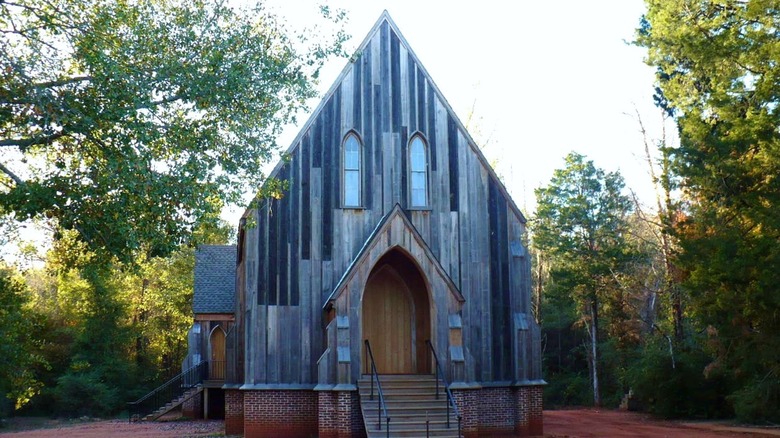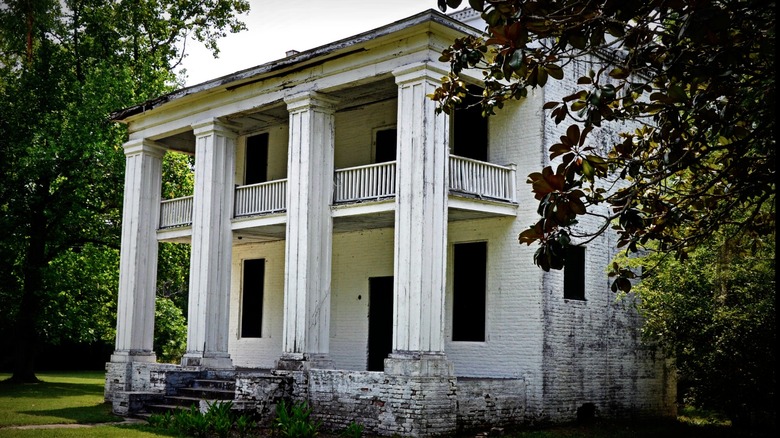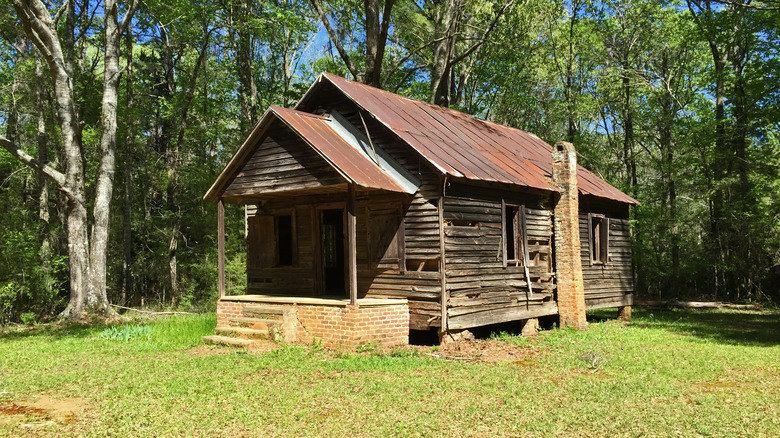Alabama's Once-Thriving First State Capital Is Now Its Most Famous Abandoned Ghost Town Full Of Mysteries
Ghost towns were once thriving settlements that vanished due to natural disasters, the removal of infrastructure like the railway, or the loss of resources like gold or copper. They are sources of intrigue because the remnants often offer us a glimpse into the past, like Rhyolite, one of Nevada's most well-preserved and photographed ghost towns. Ghost towns have also been restored, renovated, and turned into open-air museums, like Nevada City, a once prosperous Montana mining town abandoned when the gold ran out. Then there's Cahawba (or Cahaba), Alabama's first state capital and most famous ghost town. Today, it's known as Old Cahawba Archaeological Park, a fascinating place to roam around, photograph gorgeous ruins, and learn about its archaeological importance in American history.
Cahawba, in southwest-central Alabama, is an unincorporated town where the Cahaba and Alabama rivers merge. The closest city is Selma, 14 miles away or a 22-minute drive via AL 22-W. From Montgomery, 61 miles away, the drive will take just over an hour. The closest accommodations to Cahawba are in Selma, like the iconic St. James Hotel, an antebellum riverside retreat in Selma's historic downtown district. Otherwise, you can stay at the hip Trilogy Hotel Montgomery, which was created from three repurposed heritage structures. The best time to visit the area is early March to late May when the weather is the most pleasant. Summer months are also a popular time to visit, though hotel prices might be higher. If you want to see Cahawba at its spookiest, visit during the misty Halloween season!
Cahawba's tumultuous history
Before it became a ghost town, Cahawba was already built on top of another ghost town, an ancient Native American village, Maubila, that fell at the hands of Spanish explorers in 1560. In the 19th century, Governor William Wyatt Bibb and his surveyors also discovered the remains of the ancient city and incorporated it into Cahawba's planning.
Cahawba served as the capital city when Alabama became a state in 1819. When concerns over the town's low elevation turned the discussions about potential flooding, the capital was moved. Shifting gears, Cahawba became a distribution hub for cotton and, in 1859, welcomed a new railroad line. Unfortunately, Cahawba's luck turned during the Civil War.
First, the Confederate government appropriated Cahawba's iron rails for the Selma-Demopolis line, cutting off its connection to the rest of the state. Then, a crowded prison intended for 500 inmates ended up housing 3,000 disease and lice-infested Union soldiers, degrading the city's sanitation and health. A devastating seven-day flood in 1865 wreaked havoc, causing many sicknesses and deaths. The final straw for Cahawba was losing its county seat to Selma in 1866, which further decimated the town's fortune. Within 10 years, the 3,000 residents who called Cahawba home left, and the once bustling state capital was abandoned.
During the Reconstruction Era (1863-1877), former slaves took over Cahawba's forsaken courthouse and formed a community around it. However, this new development also didn't last — by the early 1900s, Cahawba became a ghost town again. Today, nature has taken over, and all that's left of its former communities are vacant structures and scattered ruins with the backdrop of pretty wildflowers and swinging Spanish moss.
A day in Old Cahawba
Old Cahawba Archaeological Park is open from 9:00 a.m. to 5:00 p.m. daily. The entry costs $2 for adults and $1 for children (6-18 years). Guided tours are available upon appointment at least two weeks in advance. A wagon tour costs $10 per adult and $8 per child, with a minimum charge of $150. The guided walking tour is $8 per person. You can also explore the Old Cahawba on your own — either on foot or by bicycle. Pay for admission or borrow a bike from the Visitor Center, open Thursday through Sunday from 10:00 a.m. to 4:30 p.m.
You can get a glimpse of the glory of Governor Bibb's vision for the city by strolling on the main roads where most houses and shops stood — starting on Arch Street, then turning into Vine Street, and following it to Cahaba River. Look out for St. Luke's Episcopal Church, a wooden Gothic Revival-style church dismantled and moved in the 1870s, which served a Black congregation 15 miles away. The church eventually returned to Cahawba in 2008. The Crocheron Columns are next to a white abandoned shack — the remains of a mansion of a wealthy New York businessman. You will also find a dilapidated wood structure that used to be a school for African American children and the brick columns of an old African American church. The "new" cemetery, created in 1851, has gorgeous Victorian-era wrought iron fences and crumbling headstones, adding to the eerie vibes of the ghost town.
Can't get enough of towns with fascinating history? Drive 84 miles south to Monroeville, a lakeside literary capital.


